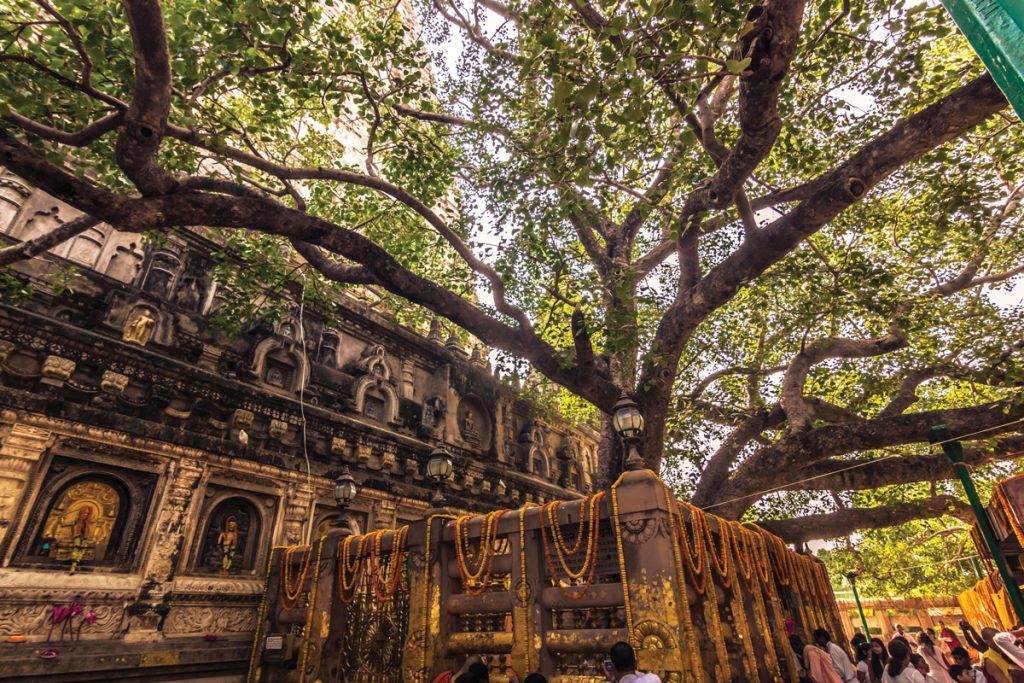The Bodhi tree, said to be a descendant of the very tree under which the Buddha gained enlightenment, is showing its own signs of suffering. In the last decade, the nearly 140-year-old tree has been declining in health, caused in part by the pilgrims who come to venerate it.
As the centerpiece of the Mahabodhi Temple complex in Bodhgaya marked by the iconic 5th-century main temple, the tree is a sacred site visited each year by more than two million people. Today’s Bodhi tree, a Ficus religiosa, was likely planted in the early 1880s, when British archaeologists agreed to restore the temple. Decades of work ensued, and meanwhile, the Bodhi tree’s limbs stretched farther and farther out.
But in 2007 the Bodhgaya Temple Management Committee began to notice sparse, light-green leaves in the tree’s canopy and damaged roots and bark along its trunk and limbs. Concerned, the committee quickly contacted the Forest Research Institute (FRI) in Dehradun, India, for an emergency checkup.
Related: The Tree Guardians of Kyoto
Dr. N.S.K. Harsh, the lead scientist of a group of specialists sent to Bodhgaya, explained to Tricycle the sources of the tree’s ailments, including, among other things, the high-intensity electric lights installed just beneath the tree to guide nightly visitors. The lights inhibited its daily respiration and posed heat risks for low-hanging branches. Besides being affected by the lack of darkness, the tree’s daily process of photosynthesis was impaired by a coating of carbon on the underside of the tree’s leaves, the result of devotees’ candle offerings.
A number of precautions have been implemented in the years since to nurse the tree back to health: candle and in-cense burnings have been removed from the tree’s immediate proximity and the night lights have been replaced by less damaging ones. Even so, recent local reports are questioning whether the tree will survive for long. As backup, a Bodhi tree offspring was planted in 2010 that “can take over” should the need arise, Harsh said.
As long as the caretaking efforts continue, Harsh believes Buddhism’s most sacred canopy should survive for at least another 50 years. So rest assured, pilgrims-to-be: while like anything else the Bodhi tree is impermanent, there is still time to visit its current incarnation.
Thank you for subscribing to Tricycle! As a nonprofit, we depend on readers like you to keep Buddhist teachings and practices widely available.
